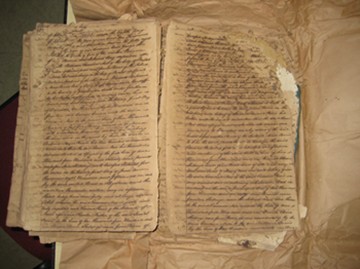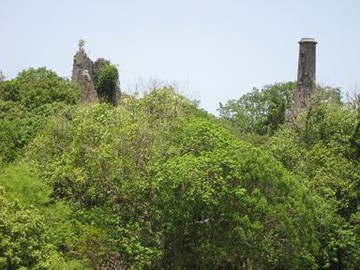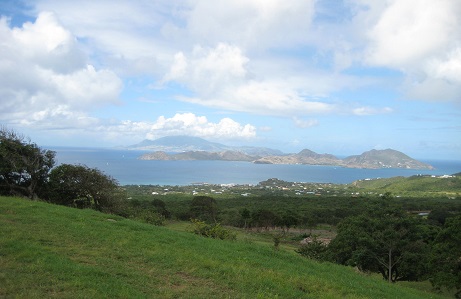On this site:
- Homepage:
- The Mountravers Plantation Community, 1734 to 1834
The ed people
The employed men - Archival research
- Fieldwork:
Developments - Other work on Nevis
- Developments in Bristol
900 names
Servants in the family - Publications, reports and broadcast media
- Acknowledgments
- Contact details, and links to other sites
Aims of our research The importance of Mountravers
On this site:
- Homepage:
- The Mountravers Plantation Community, 1734 to 1834
The enslaved people
The employed men - Archival research
- Fieldwork:
Developments - Other work on Nevis
- Developments in Bristol
900 names
Servants in the family - Publications, reports and broadcast media
- Acknowledgments
- Contact details, and links to other sites
Aims of our research The importance of Mountravers
On this site:
- Homepage:
- The Mountravers Plantation Community, 1734 to 1834
The enslaved people
The employed men - Archival research
- Fieldwork:
Developments - Other work on Nevis
- Developments in Bristol
900 names
Servants in the family - Publications, reports and broadcast media
- Acknowledgments
- Contact details, and links to other sites
Aims of our research The importance of Mountravers
On this site:
- Homepage:
- The Mountravers Plantation Community, 1734 to 1834
The enslaved people
The employed men - Archival research
- Fieldwork:
Developments - Other work on Nevis
- Developments in Bristol
900 names
Servants in the family - Publications, reports and broadcast media
- Acknowledgments
- Contact details, and links to other sites
Aims of our research The importance of Mountravers
Mountravers Plantation (Pinney's Estate) - Nevis, West Indies
Christine Eickelmann and David Small
Other work on Nevis
The following work has either been completed or is in progress:- Alexander Hamilton and 'Hamilton House', Nevis
The American statesman and first Secretary of the US Treasury was, according to his son, born on Nevis in 1757. An oral tradition developed on the island that he was born and grew up in a house which, it was claimed, his mother had inherited on the shorefront of the capital, Charlestown. Our research in the Nevis Courthouse records, which are available on-line, shows this not to have been the case. See D Small and C Eickelmann 'Hamilton House', Charlestown, Nevis - Is it connected with Alexander Hamilton's family? - Bath House Hotel, Charlestown
Popular histories of the island claim that John Huggins built the Bath Hotel in 1778 and that Horatio Nelson and the poet Samuel Taylor Coleridge were among its early famous visitors. However, new research suggests that it was built several decades later and that neither Nelson nor ST Coleridge visited. Through the new research different themes have emerged that shed light on Nevis's history. See C Eickelmann The Bath House Hotel, Charlestown.We are now collaborating on further investigating the Bath House Hotel with Dr Neal Ferris of the University of Western Ontario, Canada, assisting with archival research. See Aspirational Heritage: The History & Archaeology of the Bath House-Hotel and Bath Stream-Spring Landscapes, Nevis.
- British Library Endangered Archives Programme
Important legal documents relating to the era of slavery are held in the Eastern Caribbean Supreme Court Registry (ECSCR) in the Nevis Courthouse in Charlestown. These records were gradually deteriorating due to the conditions in which they were kept. In 2008 we conducted a survey of the condition of such records held in the ECSCR, other official bodies, the Methodist Church, and of some in the Nevis Historical and Conservation Society (NHCS). As a result of the survey, recommendations were made to the Court, the Nevis Island Administration (NIA) and the NHCS in a report which can be found at the British Library Endangered Archives Programme EAP093.
A fragile volume of late eighteenth-century Nevis court records (D Small, 2008)
In early 2015 a new project was begun under the Endangered Archives Programme (EAP794). This built on EAP093 and was led by Dr Andrew Pearson of Pearson Archaeology and co-applicant David Small. It was greatly assisted by Wakely Daniel and Kevin Barrett of the NIA and the Court's Assistant Registrar, Melissa Flemming. Over two years local staff digitally photographed for preservation about 150 volumes of historic records in the ECSCR. In 2020 these were made available on-line through the British Library. The two trained staff members who carried out the work, led by Delvon Clarke, have now formed the Nevis Digital Archiving Unit.
For access to the documents and the project report see British Library Endangered Archives Programme EAP794.

Bush Hill: the ruined windmill tower
and boiling house chimney
(D Small and C Eickelmann, 2008)
Bush Hill Estate, St John Figtree
Between 2007 and 2011 an archaeological field school was conducted at Bush Hill. With enthusiastic support and generous assistance from the owners, the Hoffman family of Montpelier Plantation Inn, the project investigated perhaps the most important undamaged industrial site on the island. The project was led by
Dr Marco Meniketti, Assistant Professor in the Department of Archaeology at San Jose State University; David Rollinson, sometime Director of the Nevis Fieldstudies Centre; and David Small, sometime Honorary Research Associate in the Department of Archaeology and Anthropology at the University of Bristol in the UK.
As part of the first phase we have produced a short report on the history of the estate; see D Small and C Eickelmann Bush Hill Estate, St John Figtree, Nevis: A Preliminary Assessment of the Documentary Evidence.
. - Clarke's Estate, St Thomas Lowland
In 2000 and 2001 we conducted a search for documentary evidence for Clarke's Estate (now the Four Seasons Resort, Nevis). This plantation bordered Mountravers to the north and was once owned by the radical Alderman Richard Oliver of London and by John Henry Clarke and his family. In 1830 Peter Thomas Huggins of Mountravers purchased the property. Huggins acquired it after its enslaved population had undergone a particularly difficult period of shortages, illnesses and unrest.
Fieldwalking in 2002 and 2004 located the likely site of a slave village through pottery scatter in an area identified by a plantation plan. See D Small and C Eickelmann A History of Clarke's Estate on Nevis: From Sugar Plantation to Luxury Four Seasons Resort. - Clifton Estate, St Thomas Lowland
A substantial set of works at Clifton Estate was cleared by the late owner in 2016, and an ambitious programme was seeking to conserve the standing remains.
In 2016 the owner commissioned a report on the history of the estate in the hope of identifying plans and documents which would provide evidence of the known remains and of sites not yet located. This process revealed several late nineteenth century plans of the estate, as well as a description of another set of works. The search has shown that Clifton Estate, also known as Laurence or Lawrence Estate, was made up of at least four estates during the late eighteenth/early nineteenth centuries and involved the labour of at least two enslaved workforces. It is hoped that further information will identify the siting of other estate works and the houses or villages of the workers. See D Small and C Eickelmann Clifton Estate, Nevis: An Account of Absence and Ambition. - Courthouse, Charlestown
The Courthouse with the Public Library is an important historic landmark in Charlestown. Built of solid stone, its history goes back to the early nineteenth century. See C Eickelmann and D Small The Courthouse, Charlestown, Nevis. - Dasent's Estate, St George Gingerland
Britain withdrew from the Transatlantic Slave Trade in 1807 but in its colonies plantation slavery continued until August 1834. To secure the Slavery Abolition Act of 1833 the British government paid £20 million to compensate slaveholders for the loss of their enslaved labour. The ‘freed’ people got nothing and had to undergo an unpaid ‘apprenticeship’ until they became fully free on 1 August 1838.
In 1835 the Bristol merchant house Pinney & Case received over £1,500 from the compensation fund for the 88 enslaved people who lived on Dasent’s on 1 August 1834. The first part of this study is an attempt to put these enslaved people into context so that they are remembered for the contributions they made to the development of Nevis and to the commercial interests of companies like Pinney & Case in Bristol.
The second part explores how Pinney & Case, and members of the Pinney family, became associated with Dasent’s and a number of other West Indian plantations, how the compensation money was distributed and to what extent it contributed to the economic and social development of Bristol and the West Country. See C Eickelmann and D Small Dasent’s Estate, Nevis, West Indies: Enslavement and Compensation. - Early Steam Engines on Nevis
Stationary steam engines from England were used to power the mills on some sugar estates. The reasons for investing in this new technology, its relative success and failure and the effect on the enslaved population are explored in Stationary Steam Engines on Sugar Plantations in the Caribbean: Nevis 1816-1846. - Eden Browne Estate, St James Windward
The history of this estate, once owned by the Huggins family, has been obscured by the persistent retelling of a story concerning a duel in 1822. The affair is supposed to have involved the tragic death of a bridegroom, John Huggins, at the hands of a Walter Maynard. There was indeed a duel and our research has uncovered the documentary evidence for a more truthful and revealing account of the affair. The details are given in an article first published in 2004 in the Nevis Historical and Conservation Society Newsletter as 'A Nevis "Legend" Revisited: the Huggins-Maynard Duel of 1822'. - Montpelier Estate, St John Figtree
In 2010 documentary research resulted in the first detailed report on the history of Montpelier Estate. This plantation was established in the 1770s by John Richardson Herbert, President of the Council of Nevis. His niece was Frances (Fanny) Nisbet, and it was at Montpelier that she met and married Captain Horatio Nelson. The plantation became the residential centre of the most powerful collection of estates yet seen in Nevis, although they were later heavily mortgaged under Herbert's daughter, the eccentric Martha Williams Hamilton. In the 1820s and 1830s this group of estates had to be broken up under her successor, Magnus Morton (Herbert). Montpelier was unusual for Nevis in that it had high proportions of enslaved first generation Africans and mixed-race people. The report includes an analysis of the enslaved population between 1817 and 1834. See D Small 'Montpelier Estate, St John Figtree, Nevis: Contrasting Legacies on a Sugar Plantation'. - Scarborough's Estate, St Thomas Lowland
The Scarborough family owned this plantation to the south of Mountravers until Peter Thomas Huggins acquired it in 1822. With 74 enslaved people (1817) it belonged to the smaller estates on Nevis; by 1834 the number had decreased further because only 17 children had been born while 44 people had died (C Eickelmann, 2003).
The site of Scarborough's plantation works had been surveyed in 2001 (NHP); David Small identified additional features in 2006. - Stoney Grove Estate, St Paul, Charlestown
Stoney Grove was owned by the family of James Tobin, the anti-abolitionist pamphleteer, from at least 1758. For an account of this estate over one hundred years see pages 17 to 29 in the report on Stationary Steam Engines on Sugar Plantations in the Caribbean: Nevis 1816-1846. - Tower Hill Estate, St Thomas Lowland
In 2007 we investigated the history of Tower Hill Estate and produced a report. Research revealed that this estate was once owned by William Mathew Burt of Maiden Erly, Member of Parliament for Great Marlow and Governor of the Leeward Islands. By the 1790s it had become property of John Taylor of St Kitts and Carsharlton in Surrey, UK. He still owned it in 1817 when 171 enslaved people lived on the estate, 75 males and 96 females. See D Small and C Eickelmann Tower Hill Estate, Nevis: A Preliminary Chronological Account.
. - The Uprising of 1725: Frank's Story
In September 1725 several enslaved people were put on trial accused of plotting an island-wide uprising. Among the alleged conspirators was a man called Frank from the Stapleton plantation in the parish of St John Figtree. Details of Frank's life after his arrest have been pieced together to reveal a remarkable story of survival. See C Eickelmann The 1725 'Slave Uprising' on Nevis: Frank's Story. - Wreck of HMS Solebay
Under Captain Charles Holmes Everitt, the Solebay was wrecked off Nevis during the Battle of Frigate Bay on 25 January 1782 and set alight by the crew under fire from two French ships. The officers and crew escaped onto the island without loss. The wreck was located in 2010 on the basis of information provided by Lillian Azevedo, an archaeologist working in Anguilla. The archaeology was led by Chris Cartellone of Texas A&M University and facilitated by Paul Diamond and Vincent Hubbard of Nevis under the aegis of the Nevis Maritime Archaeology Group.Further documentary research in the UK National Archives by David Small and by Brian Littlewood focussed on a history of the vessel and an analysis of the ship's muster and other crew records. This research has revealed that prior to the battle the 28-gun frigate played a small but important role in the Royal Navy's blockade of the North American coast during the American War of Independence. She took part in the decisive Battle of the Virginia Capes in September 1781 which led to the British surrender at Yorktown. The ship's muster has shown that a significant number of the crew were men pressed into service in Charleston, South Carolina, where the frigate was the senior naval vessel in the autumn of 1781 before sailing to join Rear-Admiral Hood in the Leeward Islands. See Dr Cartellone’s thesis HMS Solebay and Maritime Archaeological Heritage Preservation in Nevis, West Indies; see also Museum of Underwater Archaeology.
The works at Clifton Estate (C Eickelmann, 2016)

The view from Tower Hill onto St Kitts (C Eickelmann, 2016)